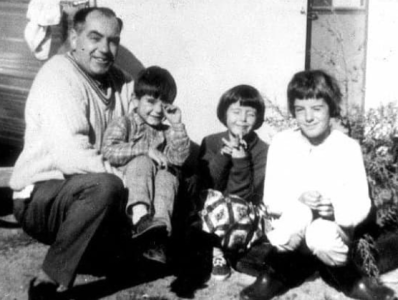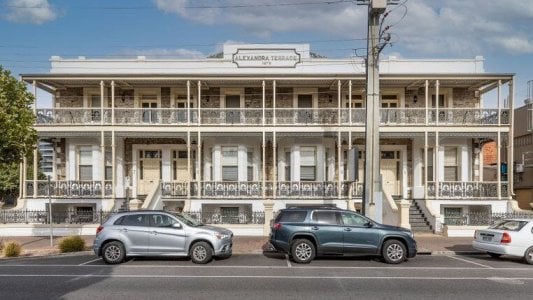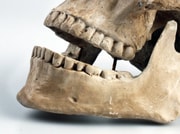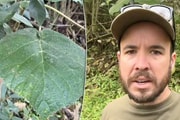New search reignites hope for missing Beaumont children! Will this finally be the breakthrough?
By
Maan
- Replies 12
For nearly six decades, one of Australia’s most haunting mysteries has remained unsolved, leaving behind questions that may never be answered.
The case gripped the nation, changed the way parents viewed child safety, and led to countless theories—but no definitive answers.
Now, a fresh effort is underway, with renewed hope that long-buried secrets might finally come to light.
Excavators were set to dig beneath an Adelaide factory site in a final attempt to locate the remains of the Beaumont children.
The search needed to be completed before the government-owned land was handed over to developers.
If successful, the search could further link their presumed murders to businessman Harry Phipps, a key suspect in the decades-old case.
Jane, 9, Arnna, 7, and Grant, 4, vanished from Glenelg Beach on 26 January 1966, in what became one of Australia's most enduring crime mysteries.
Their parents, Jim and Nancy Beaumont, had allowed Jane to take her younger siblings on a short bus trip from their Somerton Park home, expecting them to return that afternoon.
Around midday, the children purchased pasties and a meat pie from Wenzel’s Bakery with a £1 note their mother insisted she had not given them.
Witnesses reported seeing the three playing at Colley Reserve in the company of a tall, thin-faced man with short blond hair, believed to be in his 30s.
The children's disappearance marked a turning point for Australian families, shifting public attitudes towards child safety.
The Castalloy foundry, where excavators were set to dig, was owned by Phipps at the time the siblings went missing.
Despite two previous searches yielding no evidence, this excavation aimed to dig deeper into areas of interest and explore a new location identified on the site.
Phipps emerged as a primary suspect following the 2013 release of The Satin Man: Uncovering the Mystery of the Missing Beaumont Children, written by Alan Whiticker and Stuart Mullins.
Although the book did not name him explicitly, his estranged son, Hayden Phipps, had implicated his father in 2007.
He claimed he had seen Jane, Arnna, and Grant in the family’s backyard on the day they disappeared.
Hayden also alleged his father had subjected him to physical and sexual abuse during his childhood.
At the time of the disappearance, Phipps lived just 300 metres from Glenelg Beach, at the corner of Augusta and Sussex Streets.
Two brothers separately stated they had been paid by Phipps to dig a hole—two metres long and one metre wide—at the factory over the Australia Day weekend in 1966.
The business had been closed for the holiday, leaving Phipps as the only person with access to the property.
A 2013 search of the site followed the detection of an anomaly by ground-penetrating radar, though excavation efforts uncovered nothing of significance.
Police returned in 2018, after a private investigation backed by social media, but the dig—reaching 1.5 metres deep—only revealed rubbish and animal bones.
Detective Superintendent Des Bray stated at the time: ‘I can confirm that we have searched the areas of interest and reached the bottom of those areas and gone well below so that we can be 100 per cent certain.’
He added: ‘Sadly this means for the Beaumont family that we still have no answers. But we will always do anything humanly possible to locate the Beaumont children and take them home to their family.’
Before the 2018 search, police had confirmed Phipps was one of several persons of interest in the case.
‘It's probably had more people nominated as a potential offender than any other case that I'm aware of,’ Det Supt Bray said.
After that investigation, Phipps’s younger son, Wayne, dismissed the allegations, maintaining his father’s innocence and claiming his late brother had been mentally ill.
‘This is wrong,’ Wayne Phipps told the media.
‘It's hurting those who I care about and the memory of those who I cared about. We loved Harry and believe in his innocence.’
The renewed dig was led by independent South Australian MP Frank Pangallo, who had covered the case extensively as a journalist.
Pangallo secured government approval for the operation after receiving what he described as ‘compelling new evidence’.
Local businessman Flavio Anfiteatro donated the services of his family’s earthmoving company, Flavio and Sons Civil, to conduct the excavation.
‘The new evidence indicates previous digs on the former Castalloy factory site didn't go deep enough—so that is the intention of the new search,’ Pangallo said.
‘Another possible site has also been identified which will also be part of the new search.’
‘While we are hopeful the new search will help solve the mystery, it's also important to discount the site as the children's burial ground if we can.’
Here is a report from 7News:
Comparisons between old photographs and the present-day site suggested that at least 1.5 metres of soil had been added since 1966.
This view was supported by Professor Kenneth Olson, a soil science expert from the University of Illinois.
Joining the excavation team were university students, an archaeological scientist, and anthropologist and anatomist Maciej Henneberg.
Police stated they were aware of the excavation plans but were not directly involved.
A spokesperson confirmed: ‘The individuals conducting the fresh excavation at the site are following a theory that SAPOL believes is not supported by evidence and available information.’
‘SAPOL will monitor the excavation as it proceeds.’
Other suspects in the Beaumont case included convicted killers Bevan Spencer von Einem, Derek Edward Percy, Arthur Stanley Brown, and James Ryan O’Neill.
Von Einem, a sex offender, was serving life for the 1984 torture and murder of 15-year-old Richard Kelvin.
He allegedly confessed to an informant that he had abducted the Beaumonts for ‘experiments’.
Percy, one of Victoria’s most notorious child killers, had been in Glenelg on a family trip the day the children disappeared but denied any involvement.
Brown bore a resemblance to the police sketch of the suspect.
He was charged in 1998 with the 1970 murders of Judith and Susan Mackay in Townsville but was deemed unfit to stand trial due to dementia.
O’Neill, a convicted child murderer, allegedly told acquaintances he was responsible for abducting the Beaumont siblings.
For Jim and Nancy Beaumont, years of uncertainty and dashed hopes took a devastating toll, leading to their separation in the early 1970s.
Nancy passed away in September 2019, aged 92, while Jim died in April 2023 at 97.
A $1million reward remained on offer for information that could finally bring closure to one of Australia's most baffling cold cases.
For decades, theories have swirled about what really happened to the Beaumont children, but the full truth remains elusive.
Watch the video below to explore the case further and share your thoughts in the comments.

With decades of speculation and unanswered questions, do you think this latest search will finally uncover the truth about the Beaumont children’s fate?
Share your thoughts in the comments.
The case gripped the nation, changed the way parents viewed child safety, and led to countless theories—but no definitive answers.
Now, a fresh effort is underway, with renewed hope that long-buried secrets might finally come to light.
The search needed to be completed before the government-owned land was handed over to developers.
If successful, the search could further link their presumed murders to businessman Harry Phipps, a key suspect in the decades-old case.
Jane, 9, Arnna, 7, and Grant, 4, vanished from Glenelg Beach on 26 January 1966, in what became one of Australia's most enduring crime mysteries.
Their parents, Jim and Nancy Beaumont, had allowed Jane to take her younger siblings on a short bus trip from their Somerton Park home, expecting them to return that afternoon.
Around midday, the children purchased pasties and a meat pie from Wenzel’s Bakery with a £1 note their mother insisted she had not given them.
Witnesses reported seeing the three playing at Colley Reserve in the company of a tall, thin-faced man with short blond hair, believed to be in his 30s.
The children's disappearance marked a turning point for Australian families, shifting public attitudes towards child safety.
The Castalloy foundry, where excavators were set to dig, was owned by Phipps at the time the siblings went missing.
Despite two previous searches yielding no evidence, this excavation aimed to dig deeper into areas of interest and explore a new location identified on the site.
Phipps emerged as a primary suspect following the 2013 release of The Satin Man: Uncovering the Mystery of the Missing Beaumont Children, written by Alan Whiticker and Stuart Mullins.
Although the book did not name him explicitly, his estranged son, Hayden Phipps, had implicated his father in 2007.
He claimed he had seen Jane, Arnna, and Grant in the family’s backyard on the day they disappeared.
Hayden also alleged his father had subjected him to physical and sexual abuse during his childhood.
At the time of the disappearance, Phipps lived just 300 metres from Glenelg Beach, at the corner of Augusta and Sussex Streets.
Two brothers separately stated they had been paid by Phipps to dig a hole—two metres long and one metre wide—at the factory over the Australia Day weekend in 1966.
The business had been closed for the holiday, leaving Phipps as the only person with access to the property.
A 2013 search of the site followed the detection of an anomaly by ground-penetrating radar, though excavation efforts uncovered nothing of significance.
Police returned in 2018, after a private investigation backed by social media, but the dig—reaching 1.5 metres deep—only revealed rubbish and animal bones.
Detective Superintendent Des Bray stated at the time: ‘I can confirm that we have searched the areas of interest and reached the bottom of those areas and gone well below so that we can be 100 per cent certain.’
He added: ‘Sadly this means for the Beaumont family that we still have no answers. But we will always do anything humanly possible to locate the Beaumont children and take them home to their family.’
Before the 2018 search, police had confirmed Phipps was one of several persons of interest in the case.
‘It's probably had more people nominated as a potential offender than any other case that I'm aware of,’ Det Supt Bray said.
After that investigation, Phipps’s younger son, Wayne, dismissed the allegations, maintaining his father’s innocence and claiming his late brother had been mentally ill.
‘This is wrong,’ Wayne Phipps told the media.
‘It's hurting those who I care about and the memory of those who I cared about. We loved Harry and believe in his innocence.’
The renewed dig was led by independent South Australian MP Frank Pangallo, who had covered the case extensively as a journalist.
Pangallo secured government approval for the operation after receiving what he described as ‘compelling new evidence’.
Local businessman Flavio Anfiteatro donated the services of his family’s earthmoving company, Flavio and Sons Civil, to conduct the excavation.
‘The new evidence indicates previous digs on the former Castalloy factory site didn't go deep enough—so that is the intention of the new search,’ Pangallo said.
‘Another possible site has also been identified which will also be part of the new search.’
‘While we are hopeful the new search will help solve the mystery, it's also important to discount the site as the children's burial ground if we can.’
Here is a report from 7News:
Comparisons between old photographs and the present-day site suggested that at least 1.5 metres of soil had been added since 1966.
This view was supported by Professor Kenneth Olson, a soil science expert from the University of Illinois.
Joining the excavation team were university students, an archaeological scientist, and anthropologist and anatomist Maciej Henneberg.
Police stated they were aware of the excavation plans but were not directly involved.
A spokesperson confirmed: ‘The individuals conducting the fresh excavation at the site are following a theory that SAPOL believes is not supported by evidence and available information.’
‘SAPOL will monitor the excavation as it proceeds.’
Other suspects in the Beaumont case included convicted killers Bevan Spencer von Einem, Derek Edward Percy, Arthur Stanley Brown, and James Ryan O’Neill.
Von Einem, a sex offender, was serving life for the 1984 torture and murder of 15-year-old Richard Kelvin.
He allegedly confessed to an informant that he had abducted the Beaumonts for ‘experiments’.
Percy, one of Victoria’s most notorious child killers, had been in Glenelg on a family trip the day the children disappeared but denied any involvement.
Brown bore a resemblance to the police sketch of the suspect.
He was charged in 1998 with the 1970 murders of Judith and Susan Mackay in Townsville but was deemed unfit to stand trial due to dementia.
O’Neill, a convicted child murderer, allegedly told acquaintances he was responsible for abducting the Beaumont siblings.
For Jim and Nancy Beaumont, years of uncertainty and dashed hopes took a devastating toll, leading to their separation in the early 1970s.
Nancy passed away in September 2019, aged 92, while Jim died in April 2023 at 97.
A $1million reward remained on offer for information that could finally bring closure to one of Australia's most baffling cold cases.
For decades, theories have swirled about what really happened to the Beaumont children, but the full truth remains elusive.
Watch the video below to explore the case further and share your thoughts in the comments.
Key Takeaways
- Excavators searched an Adelaide factory site for the Beaumont children's remains before redevelopment, aiming to link their case to businessman Harry Phipps.
- Phipps was implicated by his son and former workers, but past searches found nothing, and police did not support the latest dig.
- Convicted killers Bevan von Einem, Derek Percy, Arthur Brown, and James O’Neill were also suspected, with some allegedly confessing.
- The 1966 disappearance deeply impacted Australia, with the Beaumonts never found, their parents passing away, and a $1million reward still offered.
With decades of speculation and unanswered questions, do you think this latest search will finally uncover the truth about the Beaumont children’s fate?
Share your thoughts in the comments.
Last edited:










